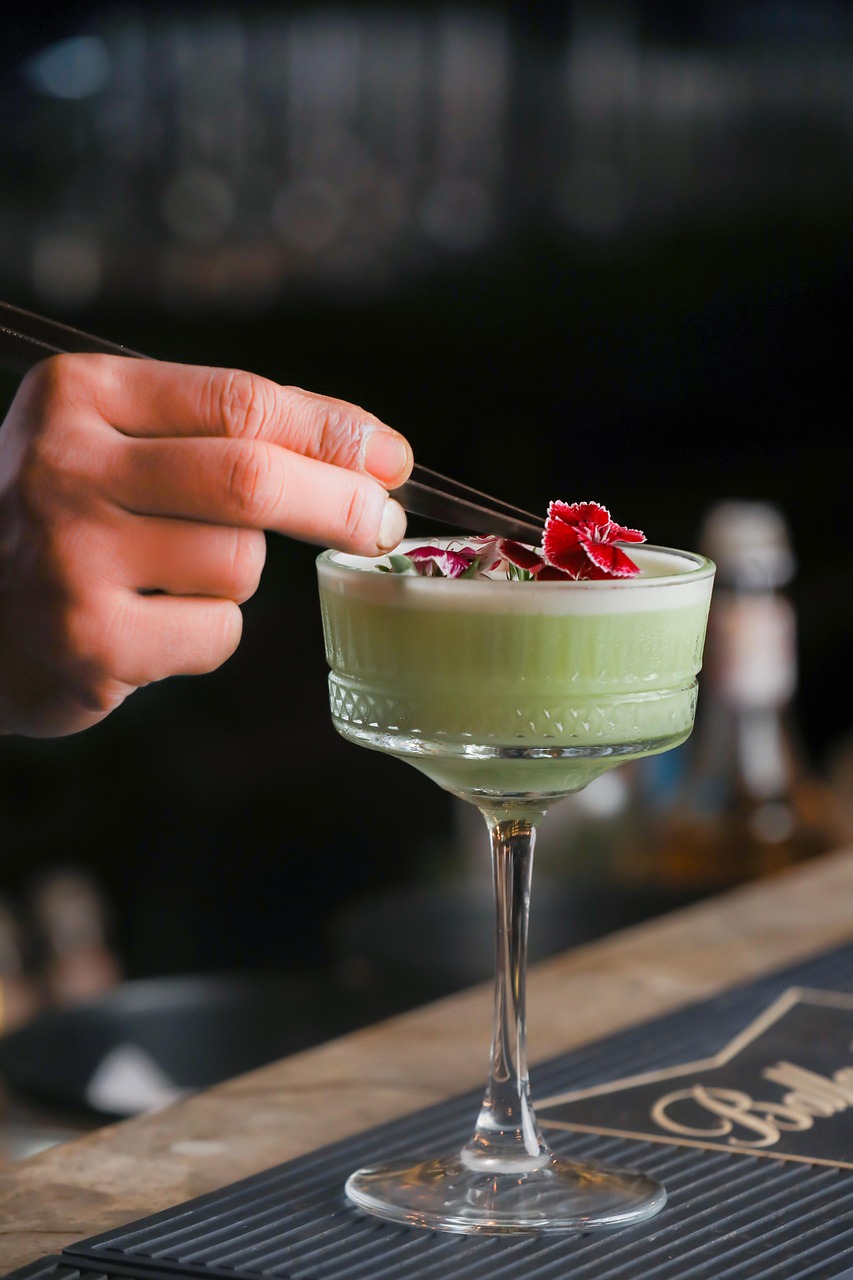Botanical Cocktails: Crafting Drinks with Edible Flowers
Sip into the future of mixology with botanical cocktails—a creative movement that brings edible flowers, fresh herbs, and foraged botanicals into your glass. This isn’t just about pretty garnishes; it’s an immersive flavor experience that redefines what it means to enjoy a drink. If you crave unique tastes and Instagram-worthy presentations, it’s time to explore the blooming world of floral-infused cocktails.

From Garden to Glass: The Allure of Edible Flowers
Edible flowers aren’t new to the culinary scene, but their presence in the world of drinks is taking center stage like never before. Traditionally, flowers like violets, rose petals, and lavender have been used in syrups or as garnishes, but modern bartenders are digging deeper—literally—by foraging for wild blooms and cultivating specialty varieties.
Beyond their aesthetic appeal, these flowers contribute nuanced flavors and aromas to cocktails. Think of the subtle sweetness of elderflower, the citrusy notes of nasturtium, or the peppery kick of calendula. The interplay of color, scent, and flavor creates an all-sensory experience that can’t be replicated with artificial ingredients. This shift is fueling a new appreciation for seasonality and locality in cocktail creation, pushing mixologists to experiment with what’s blooming now, right outside their doors.
Innovative Floral Techniques: Infusions, Syrups, and More
The beauty of botanical cocktails lies in the diverse ways flowers can be incorporated. At the forefront are floral infusions, where petals are steeped in spirits like gin or vodka, imparting both color and a signature taste. Bartenders are also crafting house-made syrups by simmering petals with sugar and water, capturing the essence of blooms like hibiscus, rose, or chamomile.
Another emerging trend is the use of hydrosols—aromatic waters produced during essential oil extraction—which lend concentrated flavor without overpowering the drink’s structure. Even ice cubes have become a canvas, with petals frozen inside for a dramatic visual effect as they slowly release flavor into the drink. These methods allow for endless customization, encouraging home enthusiasts and professionals alike to develop their own signature floral blends.
Global Inspirations: Floral Cocktails Around the World
While botanical cocktails feel cutting-edge, their roots stretch across the globe. In Mexico, hibiscus (known as jamaica) is a staple in agua fresca and now stars in mezcal-based cocktails for a tart, floral punch. In the Mediterranean, orange blossom and rose water have long found their way into drinks, lending delicate perfumed notes.
Australia’s buzzing native botanicals like finger lime flowers and lemon myrtle are appearing in contemporary cocktails, while Scandinavia’s wild foraged blossoms inspire earthy, elegant drinks. These international influences encourage a borderless approach to mixology, blending local traditions with inventive twists. As bartenders travel and experiment, the flavor map of floral cocktails is only expanding, inviting drinkers to take a global journey through every sip.
Healthful Sipping: Nutrition Meets Indulgence
Botanical cocktails aren’t just a feast for the senses—they’re also riding the wellness wave. Many edible flowers are rich in antioxidants, vitamins, and phytochemicals. For example, hibiscus is celebrated for its vitamin C content, while violets contain anti-inflammatory compounds. By using natural ingredients, bartenders can craft drinks that feel both indulgent and a little bit virtuous.
Additionally, the trend aligns with the low- and no-alcohol movement. Floral flavors shine in mocktails, sparkling infusions, or even kombucha-based concoctions, offering complex taste without relying solely on spirits. This opens up botanical mixology to a wider audience, catering to health-conscious drinkers or those seeking new sensations beyond the standard cocktail repertoire.
DIY Botanical Mixology: Bringing the Blooms Home
Ready to try your hand at crafting a garden-inspired drink? Start by sourcing edible flowers from trusted suppliers or growing your own—never use flowers from florists, as they may be treated with chemicals. Simple recipes like elderflower gin and tonic or lavender lemonade are an easy entry point. For the adventurous, experiment with wildflower-infused syrups or muddle pansies into a fresh mojito.
Presentation matters, so use clear glassware to show off your creations and consider pairing your floral drinks with complementary herbs like mint, basil, or thyme. Keep in mind that a little goes a long way—floral flavors can quickly overpower a drink if not balanced. With practice, you’ll learn to layer botanicals for complexity and discover signature combinations that celebrate your local flora.
Quick Facts for Budding Botanical Bartenders
- Always verify flowers are edible and pesticide-free before using them in drinks.
- Popular edible flowers for cocktails include violets, nasturtiums, hibiscus, borage, and marigolds.
- Floral syrups can be made in advance and stored in the fridge for up to two weeks.
- Hydrosols (flower waters) are potent—start with a few drops and build up gradually.
- Infused spirits should be strained well to avoid bitterness from stems or leaves.
- Pairing flowers with herbs amplifies aromatic complexity and depth.
- Floral ice cubes double as both garnish and flavor enhancer as they melt.
- Experiment with non-alcoholic bases like tea, kombucha, or sparkling water for unique mocktails.
- Presentation is key: edible flowers add visual flair and a sense of occasion to any drink.
- Seasonal blooms offer the freshest, most vibrant flavors—let your garden guide your menu.
Conclusion
Botanical cocktails are more than just a fleeting trend—they’re a celebration of nature, creativity, and mindful indulgence. By blending edible flowers and botanicals into drinks, we open up a world of new flavors, colors, and experiences that awaken all the senses. Whether you’re a seasoned mixologist or a curious home bartender, the possibilities are as endless as your imagination and the changing seasons. So next time you raise a glass, let it bloom with the best nature has to offer, and toast to a future where every sip is an adventure.




